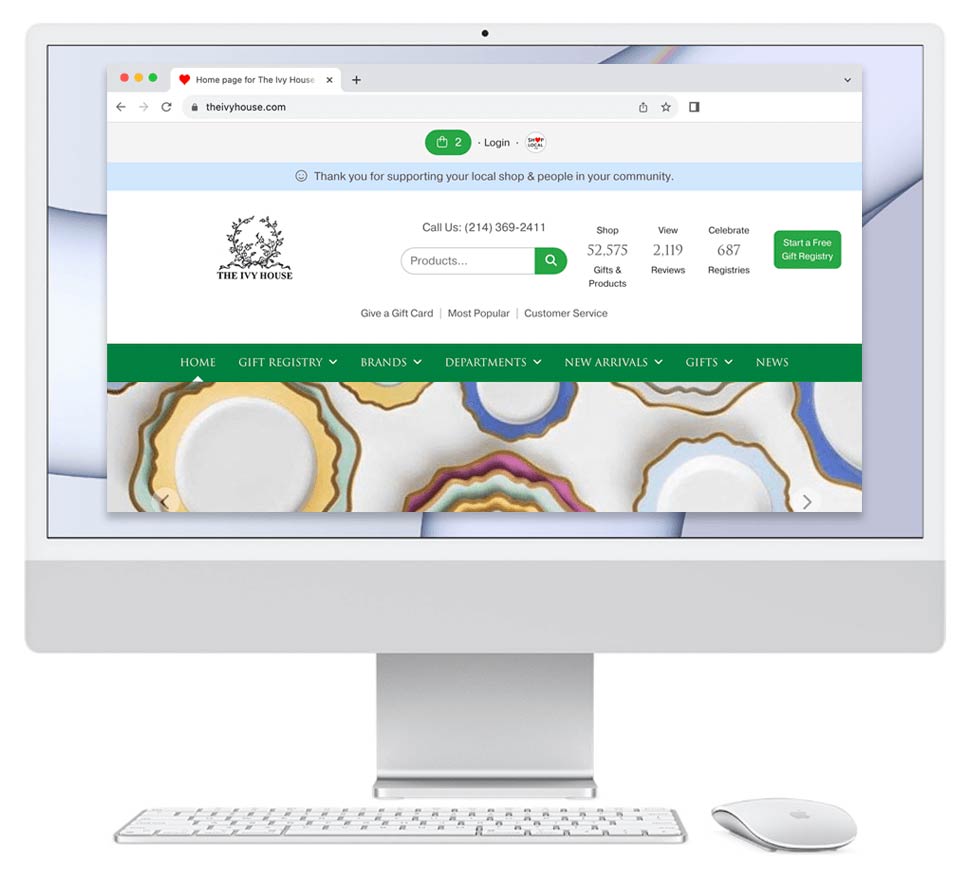96 Results:
June 30, 2023
How pre-populating information saves clients time and speeds them along a process.
How pre-populating information saves clients time and speeds them along a process.
June 30, 2023
Read More
June 30, 2023
What we can learn about a company through its mission statement.
What we can learn about a company through its mission statement.
June 30, 2023
"We help couples around the world navigate and enjoy life’s biggest moments together. As a global company, our industry-leading websites, top-ranked mobile apps, and trusted resources provide the most sought-after information, connections, and ...
Read More
June 8, 2023
How businesses keep customers coming back after they make a purchase.
How businesses keep customers coming back after they make a purchase.
June 8, 2023
Read More
June 2, 2023
How we can acquire new prospects by leveraging our existing network of customers.
How we can acquire new prospects by leveraging our existing network of customers.
June 2, 2023
Engagement
We use the 64,000 products in our Syncing service to engage 1,200 our retail clients. We email them new intros, price updates, archived items for these synced products. Once they ...
Read More
May 26, 2023
How big data, filters, and search engines can help us create a better experience for our members.
How big data, filters, and search engines can help us create a better experience for our members.
May 26, 2023
Read More
May 15, 2023
What Crocs can teach us about gaining new customers and keeping them happy.
What Crocs can teach us about gaining new customers and keeping them happy.
May 15, 2023
According to last week’s The New York Times' profile on Crocs, I’m one of tens of millions of happy Crocs owners. This happiness is profitable:
- Crocs’ sales have almost doubled since 2019.
Read More
May 9, 2023
How allocating our resources efficiently can help us save time, save money, and deliver value to our customers.
How allocating our resources efficiently can help us save time, save money, and deliver value to our customers.
May 9, 2023
Read More
March 2, 2023
How we can honor those that came before us in the retail industry.
How we can honor those that came before us in the retail industry.
March 2, 2023
Read More
February 23, 2023
How we can celebrate indie stores and promote sales by hosting a Save Local event.
How we can celebrate indie stores and promote sales by hosting a Save Local event.
February 23, 2023
Read More
February 4, 2023
How we can bring clients together to build a larger network.
How we can bring clients together to build a larger network.
February 4, 2023
“That’s the question every project leader should ask: What is the small thing we can assemble in large numbers into a big ...
Read More
January 31, 2023
How setting goals for our new members can help them be more successful.
How setting goals for our new members can help them be more successful.
January 31, 2023
Adding New Retail Members to the Product...
Read More
January 31, 2023
How integrating a messaging service into our e-commerce platform can help us acquire new customers.
How integrating a messaging service into our e-commerce platform can help us acquire new customers.
January 31, 2023
Different Networks Require a Different Number of Users in a Group
Andrew Chen in The Cold Start Problem states that a key difference among network models is the required minimum ...
Read More
January 27, 2023
How having the right defaults makes decisions easier for clients and helps them be more successful.
How having the right defaults makes decisions easier for clients and helps them be more successful.
January 27, 2023
Read More
December 28, 2022
December 28, 2022
- The acquisition effect
- The engagement effect
- The monetization effect
In the beginning, a business seeking to build a network has to concentrate on acquiring users, even if they are non-paying. Companies often give away the service, especially software companies, and we can see that with Facebook, Slack, TikTok, and many others. Bridge didn’t do ...
Read More
December 15, 2022
December 15, 2022
If...
Read More
December 8, 2022
December 8, 2022
Read More
December 1, 2022
December 1, 2022
- The price that we charge clients.
- The price our clients charge their customers.
We normally talk about the former, aka how our prices compare with other competitors, like Shopify or wholesale services like Faire.
Of increasing importance to us is what our retailers charge their customers. Walmart recently announced that it was taking brands to account and pressuring them to keep ...
Read More
November 21, 2022
November 21, 2022
When we share what leading companies do, we can often skip an explanation and sum it up in a brief sentence. Examples:
- Walmart offers low prices.
- Facebook connects us.
- Hyatt offers a place to sleep.
- Amazon offers
Read More
November 9, 2022
November 9, 2022
Read More
November 2, 2022
November 2, 2022
Read More
































